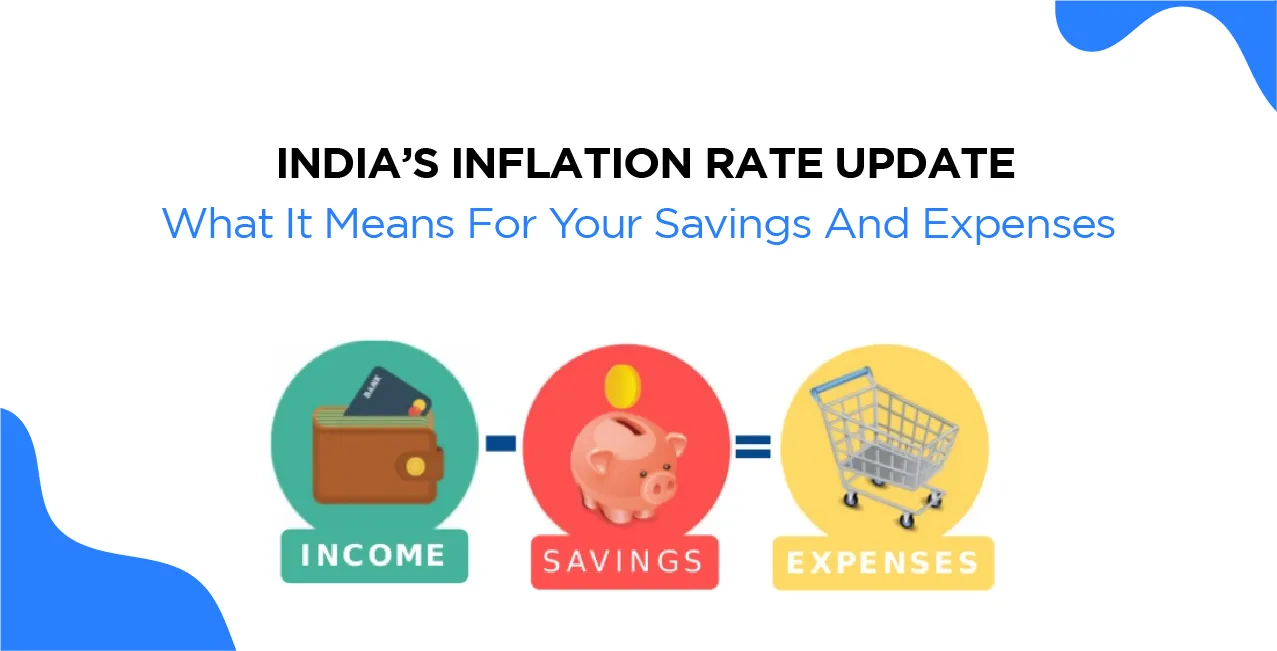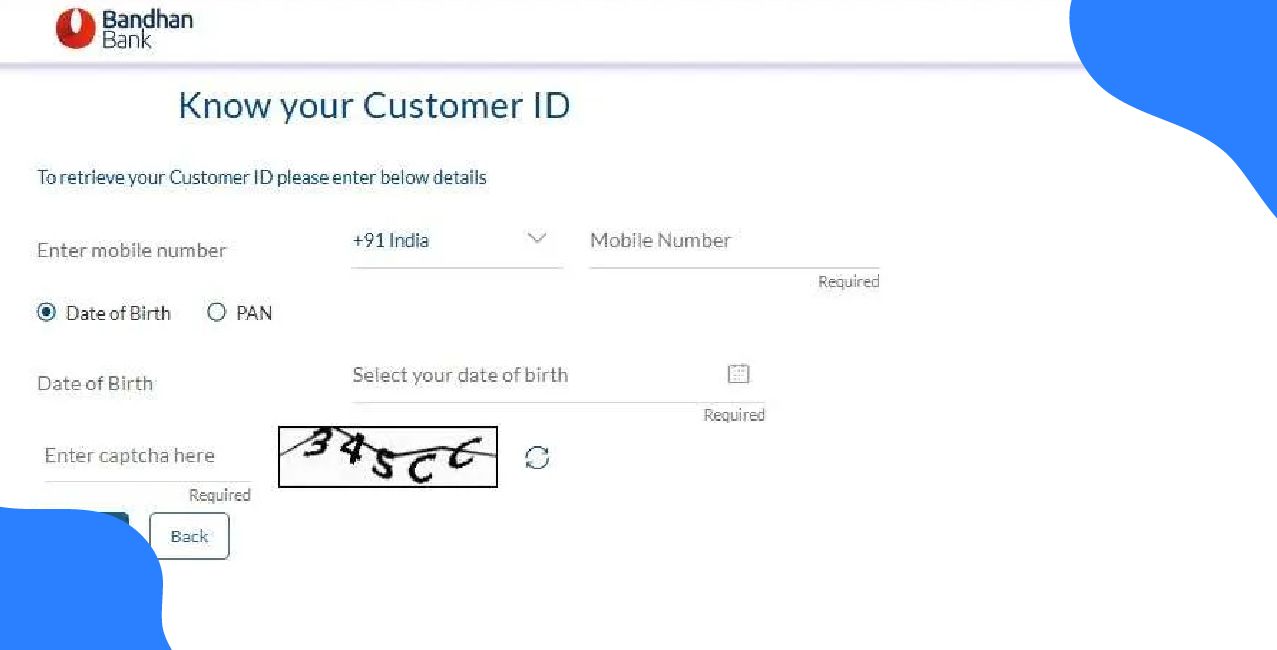
Author
LoansJagat Team
Read Time
9 Min
16 Jun 2025
India’s Inflation Rate Update: What It Means For Your Savings And Expenses
Have you ever wondered why your grocery bill seems to increase every time you head to the store, even though you buy similar products? That is inflation! It is the silent killer; it is the thief that eats away the value of your money through time, food, and fuel for retail goods.
But what about India’s inflation rate and its impact on savings, expenses, and the financial future? Let’s understand it in simple words:
Suppose Aman has ₹100 with him, and he likes buying chocolates.
Day One: One chocolate costs ₹10; thus, Aman can buy 10 chocolates for ₹100.
Next Year (With 5% Inflation Rate): The price of that one chocolate is increased to ₹10.50. Now, Aman can buy 9 chocolates with ₹100.
After 5 Years (With the Same 5% Inflation Rate): Now the price of one chocolate will become ₹12.76. Aman can buy only 7 chocolates with ₹100.
This is how inflation silently consumes your money.
Inflation: The Invisible Money Stealer
Inflation refers to the rate at which the overall level of prices for goods and services increases, thereby decreasing purchasing power.
Think of it as a relatively slower leak of the wallet – what ₹100 could buy last year now costs around ₹105 or more.
Read More - Best Strategies to Protect Your Investments from Inflation
Let's take a look at what this means for you.
How Inflation Affects Your Savings
1. Value Of Your Money Decreases
Suppose that you deposit ₹100,000 in a savings account where the interest is 4% per annum. After a year, it will add up to ₹104,000. However, since inflation is 6%, the real value of some money would depreciate. The computation is as shown:
Real Value = Nominal Value / (1 + Inflation Rate)
Real Value = ₹104,000 / 1.06 = ₹98,113.
Exactly, your ₹100,000 is simply worth less than what it was!
Inflation just caused your savings to disappear.
2. Fixed Deposits (Fds) Are Not As Safe As You Think
FDs are some of the most preferred among Indians as they guarantee returns.
FACTOR | WITHOUT FD | WITH FD (7% INTEREST) | IMPACT OF INFLATION (6%) |
INITIAL AMOUNT | ₹100,000 | ₹100,000 | ₹1,00,000 |
AFTER 1 YEAR | ₹100,000 | ₹1,07,000 | ₹1,06,000 (due to inflation) |
GROWTH EARNED | ₹0 | ₹7,000 | -₹6,000 (loss in value) |
REAL RETURN | ₹0 | 1,000 | Only 1% gain |
Even though FD gives 7% returns, inflation reduces the real gain to just 1%.
3. Emergency Funds Need Improvement
If your emergency fund consists of ₹50,000, inflation says that this amount can no longer support the same expenses one year from now. By the next year, you might need a stepped-up scar of about ₹53,000.
The Effects Of Inflation On Expenses
Inflation is the percentage at which the price level of goods and services increases throughout a period. When inflation is high, the purchasing power of your money decreases.
Even with the small expenses that we do not mind much when you put everything together like rent, groceries, fuel, education, and others, it still makes a notable difference.
Let’s see how inflation affects different spending areas.
1. Grocery Prices Are Skyrocketing
Do you remember when a kilogram of tomatoes cost ₹40? Now they go up to ₹80, too.
A family that spends ₹10,000 for groceries every month may have to shell out about ₹10,600 a year later. That extra ₹7,200 annually is great for a weekend getaway, though!
2. Fuel Costs Can Burn A Hole In Your Pocket
Gasoline prices are truly at the top. Due to inflation, your monthly fuel could increase from ₹5,000 to ₹5,300. Such increases may mean about ₹3,600 more in a year. Ouch!
3. Emis Become Heavier
If you have taken a loan, inflation can be a blessing in disguise for you.
Your EMI remains unchanged, but the real value of it depreciates with time. Interest rates going up means new loans become more expensive.
How To Beat Inflation And Protect Your Money
Investments are the best way to avoid inflation and build wealth.
Here are a few things you can do to be ahead of inflation:
1. Invest In Equities
Historically, stocks have provided a barrier against inflation.
The Sensex has given an average long-term return of between 12-14% annually. Even if the inflation is graded at 6%, that translates into a real return of 6%-8%.
2. Investing In Inflation-Indexed Bonds
Such bonds give back inflation-adjusted returns.
In other words, this kind of investment would protect your money.
If inflation is 6%, your bond may offer a 6.5-percent return, yielding a real return of 0.5%.
3. Diversify Your Portfolio
Don't put all your eggs in one basket-Make a mix of stocks, mutual funds, gold, and real estate.
Imagine you have to invest ₹10,000, and you decide to put all ₹10,000 into one stock, and that stock loses 50%; you are now only left with ₹5,000. Such a big loss!
On the other hand, if you diversify by splitting your ₹10,000:
Investment Type | Initial Amount | If The Value Drops By 50% | If The Value Rises By 50% |
STOCKS | ₹2,500 | ₹1,250 | - |
MUTUAL FUNDS | ₹2,500 | Varies | Varies |
GOLD | ₹2,500 | - | ₹3,000 |
REAL ESTATE | ₹2,500 | Varies | Varies |
TOTAL | ₹10,000 | Loss in stocks, but gain in gold balances the impact | |
We can see that diversification helped balance our investment; while other investments fell, investments like Gold might rise.
4. Set Your Budget Accordingly
Inflation is going to make things cost you more than what they used to cost, and therefore your budget needs to be accordingly elevated.
If you are spending ₹30,000 a month this year, then make a provision of ₹31,800 from next year on.
5. Increase Your Income Streams
Side hustles, freelancing, or investing in dividend-paying stocks can help you keep up with rising costs.
For example, earning an extra ₹5,000 a month can offset the impact of inflation on your expenses.
How Do We Measure Inflation?
In India, inflation is measured using:
Consumer Price Index (Cpi): CPI measures inflation by tracking the price changes of essential goods/services like food, housing, and healthcare.
For example, if the CPI in the current year is 100 and rises to 110 in the next year, it indicates a 10% inflation rate, meaning the cost of living has increased by 10%.
Wholesale Price Index (Wpi): It measures the change in prices at the wholesale level, covering raw materials, manufactured goods, and fuel.
If the price of steel (weight: 10%) rises from ₹100 to ₹120 and fuel (weight: 15%) rises from ₹200 to ₹220.
This means WPI increased by 12.5%, indicating wholesale inflation.
Types Of Inflation
- Demand-Pull Inflation: It happens when the demand for goods and services exceeds supply.
- Cost-Push Inflation: It is caused by rising production costs. For example, wages, raw materials, etc.
- Built-In Inflation- It originates from a wage-price spiral, where higher wages lead to increased prices, causing further wage demands.
Inflation And Interest Rates: A Love-Hate Relationship!
Higher Inflation = Higher Interest Rates;
Lower Inflation = Lower Interest Rates.
Let’s see how inflation and interest rates work together:
Also Read - How Inflation Affects Your Savings and Investment Strategy
SCENARIO | EFFECT ON INFLATION | CENTRAL BANK ACTION | IMPACT ON INTEREST RATES | OUTCOME |
HIGH INFLATION | Prices of goods/services rise | Increase interest rates | Higher borrowing costs | Reduced spending and inflation control |
LOW INFLATION | Weak demand and slow economic growth | Decrease interest rates | Lower borrowing costs | Increased spending and economic growth |
VERY HIGH INFLATION (Hyperinflation) | Rapid price surges, currency devaluation | Aggressive rate hikes | Extremely high borrowing costs | Severe slowdown, risk of recession |
DEFLATION (Negative Inflation) | Falling prices, reduced business profits | Cut interest rates drastically | Very cheap borrowing | Stimulates demand, prevents economic stagnation |
How Is The Government Tackling Inflation?
As of February 2025, the Indian government and the Reserve Bank of India have implemented several measures to manage and control inflation, which are:
Measure | Description | Latest Actions |
Raising/Lowering Interest Rates | The RBI changes the repo rate to control borrowing and spending. Higher rates slow inflation; lower rates boost growth. | The RBI lowered the repo rate to 6.25% in Feb 2025 to support economic growth as inflation eased. |
Improving Food Supply | The government invests in farming and food storage to keep food prices stable. | Farm Budget by 15% to 1.75 lakh crore to improve crop production and storage. |
Managing Imports/Exports | Controlling what India buys or sells globally to balance supply and demand. | Allowed 1 million tons of sugar exports to help sugar mills manage surplus stock |
Tax And Government Spending | Adjusting taxes and spending to control inflation and boost the economy. | New tax rebate on income up to ₹12.75 lakh in the 2025 Budget to increase people’s spending power. |
Final Thoughts
With smart investment plans, cutting out unnecessary expenses, and remaining financially aware, you can secure your wealth without compromising your lifestyle. Actively anticipate and create a plan to use inflation to your advantage instead of as a drawback!
Faqs
1. What is inflation, and why is it significant?
Inflation refers to the rate at which the prices of goods and services increase over time. This rise in prices is important as it diminishes purchasing power; consequently, your money buys fewer items compared to earlier periods.
2. What factors contribute to inflation?
Various elements can trigger inflation, including increased consumer demand (referred to as demand-pull inflation), higher production costs (known as cost-push inflation), or external influences like fluctuations in global oil prices.
3. Is all inflation harmful?
Not always. A moderate inflation rate—generally between 4% and 6%—can indicate a robust economy. Conversely, extremely high levels of inflation or hyperinflation may significantly diminish savings value and destabilise economic conditions.
4. How does inflation influence my savings account?
If the interest earned on your savings account does not match prevailing inflation rates, the actual value of your funds declines. For instance, with a 4% interest rate on an account coupled with a 6% inflation rate, you experience an effective loss of approximately 2%.
5. What types of investments act as safeguards against inflation?
Engaging in assets such as stocks, real estate properties, gold, and bonds that are indexed for inflation can be effective strategies for staying ahead of rising expenses over time.
6. What effects do inflation have on loans and equated monthly installments (EMIs)?
Over time, while existing loans' EMIs will seem less burdensome due to inflating currency values, new borrowing arrangements might incur higher interest rates—a combination resulting in elevated overall loan-related expenses.
7. Should I adjust my emergency fund in response to rising inflation?
Absolutely! If your emergency fund amounts to ₹50,000 during an ongoing annual rate of 6%, consider increasing this reserve to around ₹53,000 to maintain its purchasing power against anticipated future price hikes.
About the Author

LoansJagat Team
‘Simplify Finance for Everyone.’ This is the common goal of our team, as we try to explain any topic with relatable examples. From personal to business finance, managing EMIs to becoming debt-free, we do extensive research on each and every parameter, so you don’t have to. Scroll up and have a look at what 15+ years of experience in the BFSI sector looks like.

Quick Apply Loan
Subscribe Now


